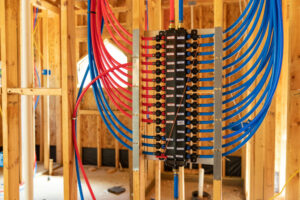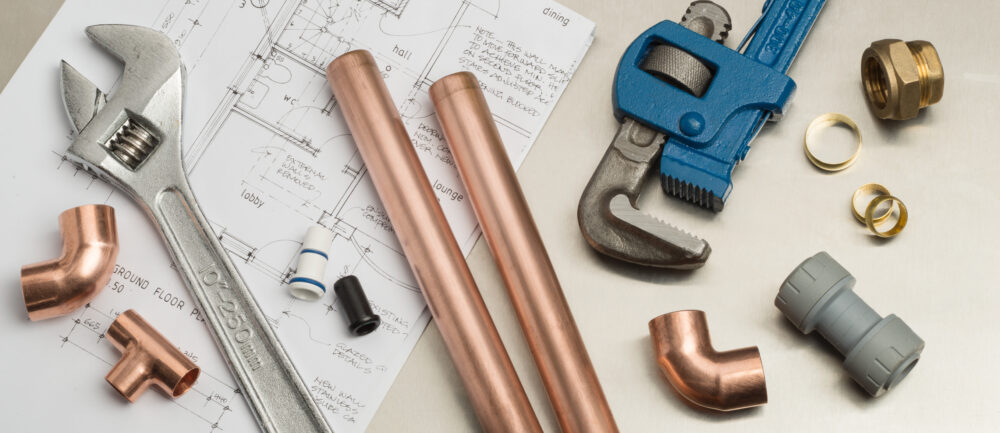In 2023, the plumbing industry is experiencing significant transformations driven by technological advancements, eco-friendly solutions, and changing consumer preferences. To stay ahead in this ever-evolving landscape, it’s essential to understand the latest trends in plumbing. In this article, we will discuss the top plumbing trends for 2023, including smart plumbing, sustainable solutions, innovative materials, and workforce developments.
The Growing Popularity of Smart Plumbing
Leak Detection Systems
Leak detection systems are increasingly popular due to their ability to prevent water damage and save money on utility bills. These systems utilize sensors to monitor water flow and pressure, alerting homeowners to potential leaks through mobile notifications or alarms. As a result, they can address minor issues before they become costly repairs.
Smart Water Heaters
Smart water heaters offer enhanced energy efficiency and convenience. They can be controlled remotely through mobile apps, allowing homeowners to adjust temperature settings, track energy usage, and schedule maintenance. With the ability to learn usage patterns, smart water heaters optimize energy consumption, reducing utility bills and environmental impact.
Touchless Faucets and Fixtures
Touchless faucets and fixtures have gained traction for their hygiene benefits and water conservation features. Equipped with infrared sensors, they automatically turn on and off, minimizing water waste and reducing the spread of germs.
Sustainable Plumbing Solutions
Water-Saving Technologies
Water-saving technologies, such as low-flow fixtures and dual-flush toilets, are in high demand as homeowners seek to reduce water consumption and utility costs. These devices deliver significant water savings without compromising performance or user experience.
Greywater Recycling Systems
Greywater recycling systems capture water from showers, sinks, and laundry for reuse in landscape irrigation or toilet flushing. By recycling greywater, homeowners can significantly reduce water consumption, lower utility bills, and contribute to sustainable water management.
Solar Water Heating
Solar water heating systems use energy from the sun to heat water, reducing reliance on conventional energy sources and cutting energy costs. As solar technology becomes more efficient and affordable, an increasing number of homeowners are adopting this eco-friendly solution.

Trends in Plumbing Materials
PEX Piping
Cross-linked polyethylene (PEX) piping is gaining popularity for its flexibility, durability, and cost-effectiveness. PEX pipes are resistant to corrosion, scale buildup, and freezing, making them an ideal choice for various plumbing applications.
Brass Fittings
Brass fittings are experiencing a resurgence in popularity due to their durability, corrosion resistance, and versatility. Brass is compatible with various pipe materials, including copper, PEX, and PVC, making it a preferred choice for plumbing professionals.
Flexible Gas Lines
Flexible gas lines, such as corrugated stainless steel tubing (CSST), offer a more convenient and safer alternative to traditional rigid gas lines. They are easier to install, require fewer connections, and are less susceptible to leaks.
Pipe Rehabilitation and Trenchless Technology
Cured-in-Place Pipe Lining (CIPP)
CIPP is an innovative method of pipe rehabilitation that involves inserting a flexible, resin-saturated liner into a damaged pipe and curing it in place to create a new, seamless pipe within the old one. This trenchless method is cost-effective, minimally disruptive, and extends the life of existing pipes.
Pipe Bursting
Pipe bursting is a trenchless technique for replacing damaged pipes by breaking the old pipe and simultaneously pulling a new one in its place. This method reduces excavation and restoration costs while providing a long-lasting solution for damaged pipelines.
Trenchless Pipe Replacement
Trenchless pipe replacement technologies, such as pipe bursting and CIPP, are becoming increasingly popular due to their minimal disruption, cost-effectiveness, and eco-friendly nature. These methods significantly reduce the need for digging and minimize damage to landscapes and infrastructure.
Prefabricated Plumbing Systems
Prefabricated plumbing systems involve assembling plumbing components off-site and installing them on-site as complete units. This approach streamlines the installation process, reduces waste, and improves overall project efficiency.
Workforce and Training Trends
The plumbing industry is facing a shortage of skilled labor, leading to an increased focus on training and apprenticeship programs. Additionally, many plumbing companies are embracing digital platforms for training, offering online courses, webinars, and virtual reality experiences to upskill their workforce.
Conclusion
In 2023, the plumbing industry is witnessing a shift towards smart plumbing, sustainable solutions, and innovative materials. As the industry adapts to these trends, professionals must stay informed and embrace new technologies and techniques to remain competitive. By doing so, they can ensure high-quality services, meet customer expectations, and contribute to a more sustainable future.
FAQs
What are the benefits of smart plumbing?
Smart plumbing offers improved efficiency, convenience, and cost savings. It enables homeowners to monitor and control water usage, prevent leaks, and optimize energy consumption.
What is greywater recycling?
Greywater recycling involves capturing water from showers, sinks, and laundry for reuse in landscape irrigation or toilet flushing, reducing water consumption and utility costs.
Why is PEX piping becoming popular?
PEX piping is gaining popularity due to its flexibility, durability, and cost-effectiveness. It is resistant to corrosion, scale buildup, and freezing, making it suitable for various plumbing applications.
What is trenchless technology?
Trenchless technology refers to methods of repairing or replacing pipes without the need for extensive excavation. Examples include cured-in-place pipe lining (CIPP) and pipe bursting.
What are prefabricated plumbing systems?
Prefabricated plumbing systems involve assembling plumbing components off-site and installing them on-site as complete units, streamlining the installation process and improving overall project efficiency.


